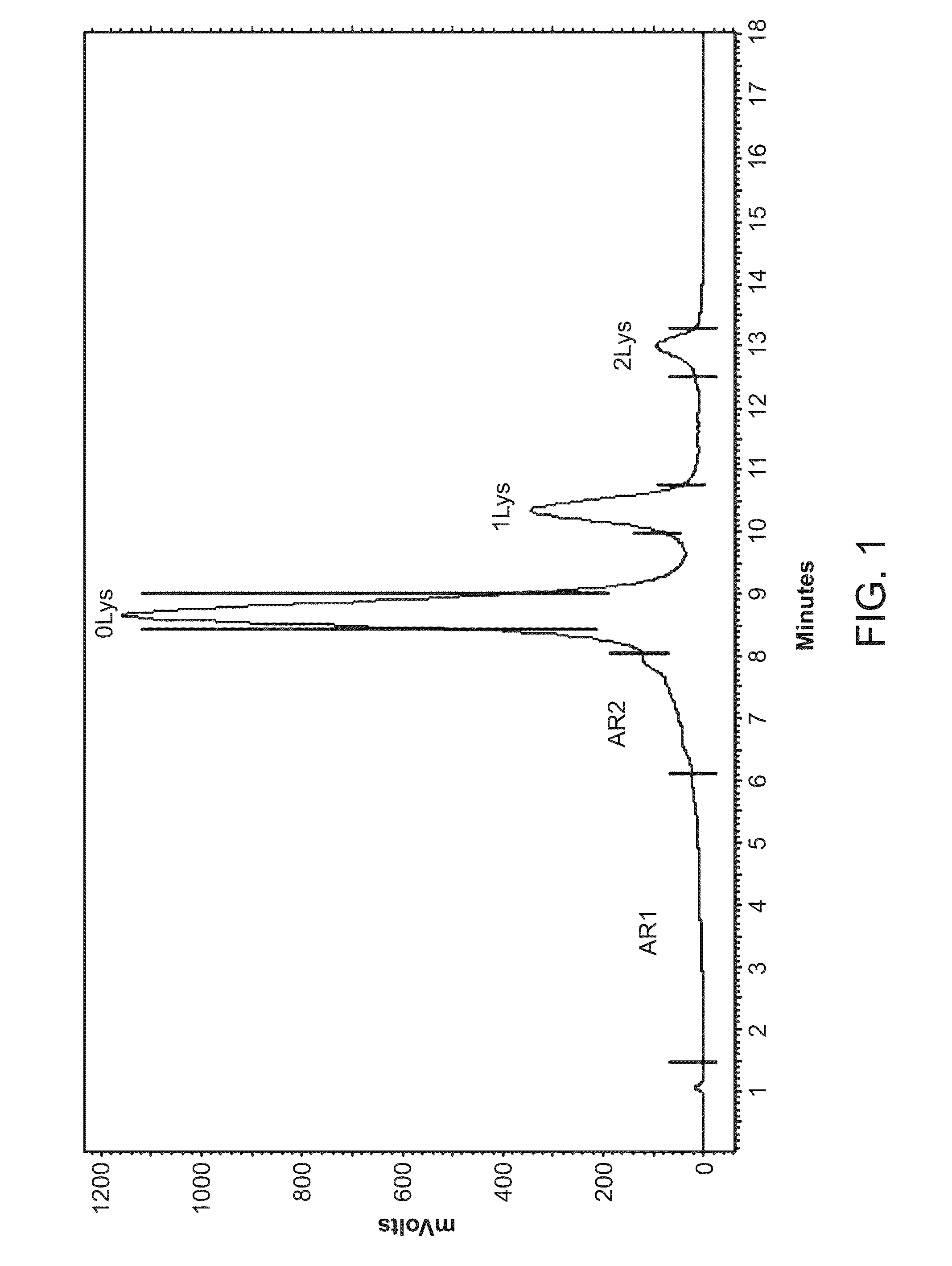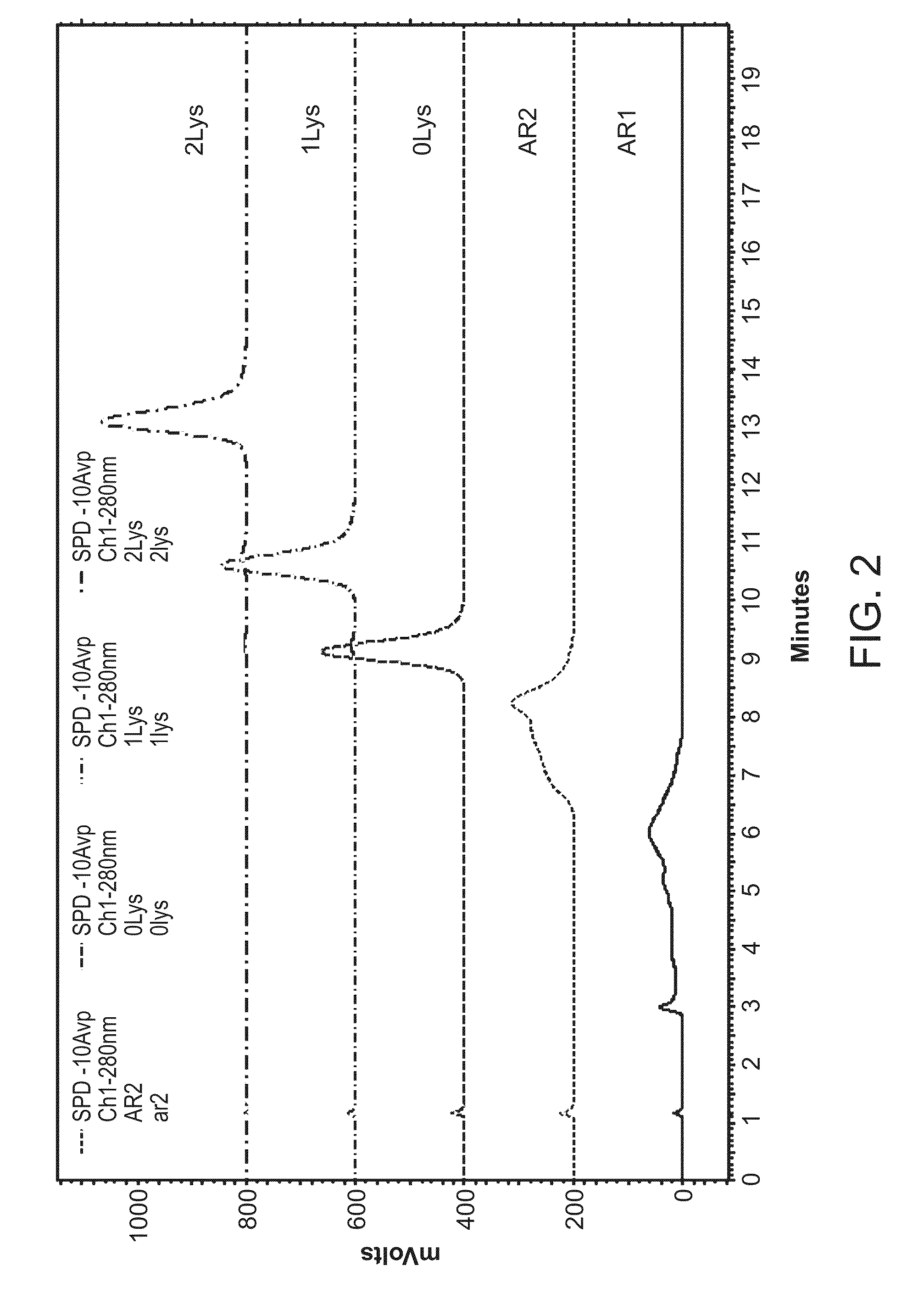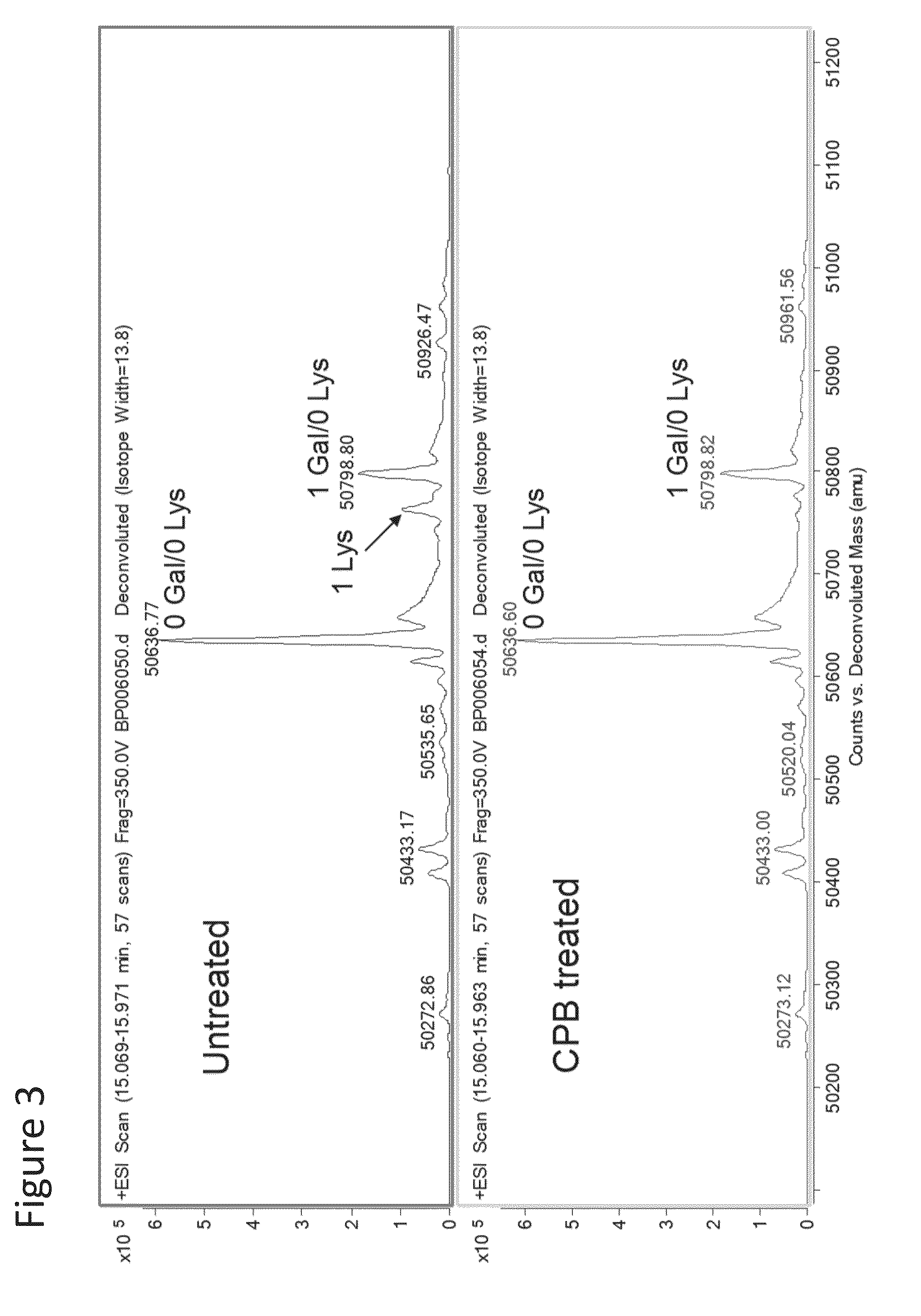MUTATED ANTI-TNFa ANTIBODIES AND METHODS OF THEIR USE
- Summary
- Abstract
- Description
- Claims
- Application Information
AI Technical Summary
Benefits of technology
Problems solved by technology
Method used
Image
Examples
example 1
Analysis of Product-Related Substance Variation of Adalimumab
[0365]The production of proteins for biopharmaceutical applications typically involves the use of cell cultures that are known to produce proteins exhibiting varying levels of product-related substance heterogeneity. Such heterogeneity includes, but is not limited to, charge variants such as acidic species and basic species. For example, but not by way of limitation, the charge variants can be separated based on chromatographic residence time. FIG. 1 depicts a non-limiting example of such a division wherein the total acidic species associated with the expression of Adalimumab is divided into a first acidic species region (AR1) and a second acidic species region (AR2), as well as the uncharged product (Lys 0) and the two basic variants, where one C-terminal lysine is present (Lys 1) or both C-terminal lysines are present (Lys 2). The compositions of particular acidic species regions may differ depending on the particular an...
example 2
Reduction in Lysine Variation by Treatment with Carboxypeptidase B
[0366]Without being bound by theory, it is believed that a C-terminal lysine of antibody will be quickly cleaved enzymatically through the catalysis of carboxypeptidase U. In order to test the susceptibility of antibodies to such enzymatic removal, which would convert Lys 1 and Lys 2 species to Lys 0, a recombinant carboxypeptidase B was incubated with an Adalimumab sample containing variants, including those with terminal lysines. The population of antibody with C-terminal lysine was quickly converted to Lys 0 species as shown in FIG. 3 (compare untreated which includes a population of Lys 1 to CPB treated where essentially the entire population has been converted to Lys 0).
example 3
Preparation of Modified Anti-TNFα Antibody
[0367]In order to minimize enzymatic cleavage of the C-terminal lysine, and thereby reduce product heterogeneity, a modified anti-TNFα antibody was prepared. Specifically, a proline residue was inserted between the C-terminal lysine and the immediately preceding glycine. Thus the C-terminal three amino acids were altered from the original Adalimumab C-terminal sequence, PGK, to a modified C-terminal sequence of PGPK. Without being bound by theory, it is believed that because proline is an imino acid in which the side chain bonds to its backbone nitrogen, the inclusion of a prolines residue at this location will add a kink and rigidity to the peptide backbone and as such will restrict the ability of peptidases to cleave the C-terminal lysine.
PUM
| Property | Measurement | Unit |
|---|---|---|
| Fraction | aaaaa | aaaaa |
| Fraction | aaaaa | aaaaa |
| Fraction | aaaaa | aaaaa |
Abstract
Description
Claims
Application Information
 Login to View More
Login to View More - R&D
- Intellectual Property
- Life Sciences
- Materials
- Tech Scout
- Unparalleled Data Quality
- Higher Quality Content
- 60% Fewer Hallucinations
Browse by: Latest US Patents, China's latest patents, Technical Efficacy Thesaurus, Application Domain, Technology Topic, Popular Technical Reports.
© 2025 PatSnap. All rights reserved.Legal|Privacy policy|Modern Slavery Act Transparency Statement|Sitemap|About US| Contact US: help@patsnap.com



